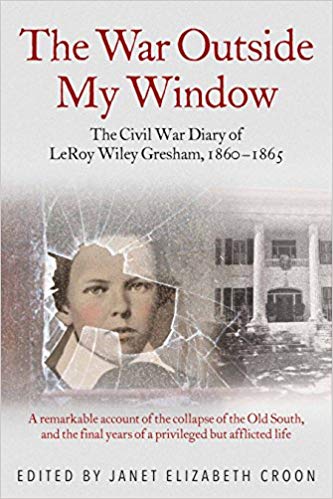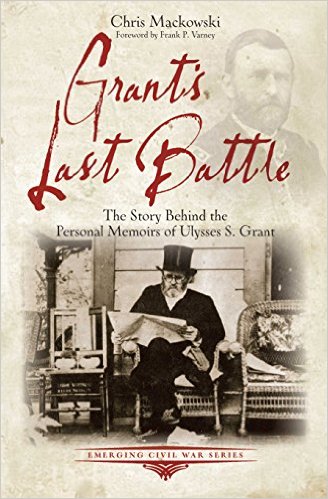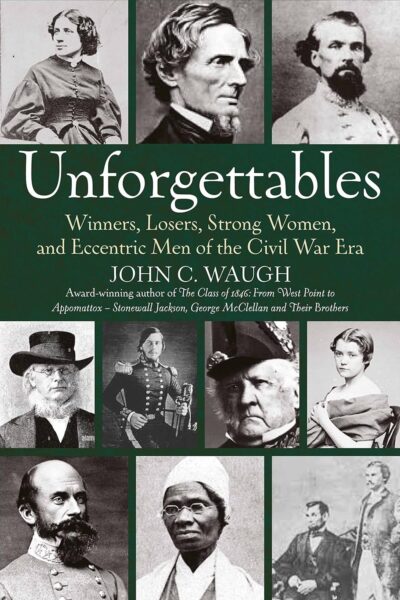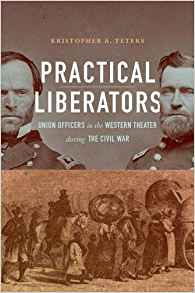Battle Lines: A Graphic History of the Civil War by Jonathan Fetter-Vorm and Ari Kelman. Hill and Wang, 2015. Cloth, ISBN: 978-0-8090-9474-5. $26.00.
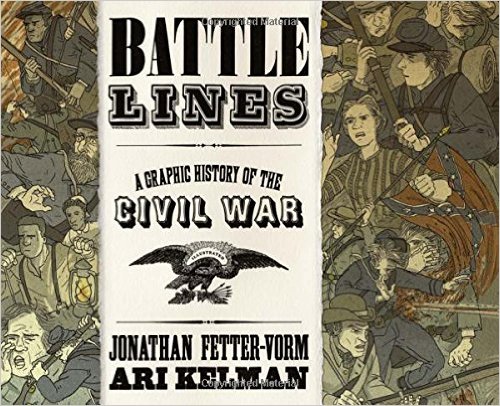 Jonathan Fetter-Vorm and Ari Kelman’s Battle Lines is the first scholarly graphic history of the American Civil War. Lest readers be skeptical, this is no mere comic book; on the contrary, it is academic history at its finest. The book’s epigraph quotes Walt Whitman’s now iconic prediction that the “real war will never get in the books,” but Battle Lines comes as close to accomplishing this as any book this reviewer has read.
Jonathan Fetter-Vorm and Ari Kelman’s Battle Lines is the first scholarly graphic history of the American Civil War. Lest readers be skeptical, this is no mere comic book; on the contrary, it is academic history at its finest. The book’s epigraph quotes Walt Whitman’s now iconic prediction that the “real war will never get in the books,” but Battle Lines comes as close to accomplishing this as any book this reviewer has read.
Fetter-Vorm, an award-winning artist, and Kelman, a Bancroft Prize-winning historian, tell the story of the Civil War and Reconstruction through fifteen independent vignettes. Each begins with a fictional newspaper page that provides narrative background for the period, and artwork follows. In all of the illustrations, the dialogue spoken by nonfiction characters is factual.
Most of Battle Lines’ vignettes depict historical events, including the 1863 Richmond Bread Riots, Alexander Gardner’s photography at Gettysburg, the New York City Draft Riots, Abraham Lincoln’s assassination, the 1873 Colfax Massacre, and the battles at Fort Sumter, First Bull Run, Vicksburg, Fort Wagner, the Wilderness, and Spotsylvania Court House. Others tell fictional stories, though they are inspired by actual events. For example, Chapter Four depicts the fictitious story of George Washington, a runaway slave from North Carolina, who flees to the Union lines at Fortress Monroe, Virginia, where he experiences intense racism. The federal soldiers at Ft. Monroe openly decry Gen. Benjamin Butler’s 1861 emancipation “experiment,” address Washington as “boy,” hold him at gunpoint, and eventually dispatch him to a Union contraband camp, where a bookkeeper assigns him to a trench-digging crew before refusing to check the camp rolls for the names of Washington’s wife and daughter. The chapter concludes with a gut-wrenching image of Washington and other freedmen digging trenches while Union soldiers on horseback oversee them, a scene that is juxtaposed with Frederick Douglass delivering his 1852 “What to the Slave is the Fourth of July?” speech. Readers unfamiliar with the complex story of emancipation, nineteenth-century race relations, and federal policy toward runaways in the Civil War’s early months should nevertheless come away from the chapter knowing that most Union soldiers did not support emancipation in 1861, that conditions in federal contraband camps in many ways resembled slavery, and that slave agency and the Union army were integral to emancipation.
If there is an overarching theme to Fetter-Vorm and Ari Kelman’s interpretation of the Civil War, then it is the conflict’s gruesome, uncivil nature. In other words, most of their illustrations reflect what historian Yael Sternhell recently called “New Revisionism.”[1] A Minié ball rips through a soldier’s flesh and shatters his arm, which surgeons must amputate. Bored soldiers fistfight and hunt rabbits in camp, while patients moan, groan, and expire in a makeshift hospital. Stacks of mutilated bodies lie in mass graves outside Fort Wagner and in Spotsylvania’s Mule Shoe salient, while a Confederate soldier suffering psychological trauma writes to his fallen comrade’s sweetheart to inform her of his death.
All of Battle Lines’ stories reflect the most up-to-date scholarship on the war. For example, Chapter Seven, which centers on a mosquito, reflects the recent popularity of environmental history by showing that malaria did not distinguish between Union and Confederate, soldier and civilian, during the Union siege of Vicksburg. Moreover, readers learn that the federal siege prevented Confederate doctors in Vicksburg from acquiring sufficient amounts of quinine, thus exacerbating suffering and death in the town. Additionally, the book’s final chapter—in which passengers on a westbound train discuss Indian Removal, race relations, the postwar economy, and the disputed presidential election of 1876—connects the Civil War and Reconstruction to events in the West, much as recent scholars have done.[2]
I wish Fetter-Vorm and Kelman had given greater attention to events in the Trans-Mississippi, some of which are briefly mentioned in the chapter introductions but do not appear in the graphics. A chapter on the guerrilla war west of the Mississippi would have broadened the book’s geographic scope and highlighted a part of the war that recent scholars have shown was central to the conflict.[3] And yet these are only minor criticisms of what is otherwise a remarkable—and beautiful—book. In fact, I wish I possessed the artistic skills to review Battle Lines with an illustration—depicting an historian finishing the book in a single sitting and then enthusiastically recommending it to his colleagues, or perhaps a classroom of students so engrossed in the stories that they remained blissfully unaware of their educational value. Might graphic histories such as Battle Lines represent the wave of our pedagogical future? Are they an acceptable, if not ideal, way for teachers to engage visually-oriented millennials with scholarly material? These are questions future graduate seminars and professional conferences would be wise to consider. Battle Lines should be required reading in graduate historiography and teaching courses. It is a tribute to Fetter-Vorm and Kelman that I want copies of the book displayed on my academic bookshelf, in my classroom, and on my coffee table.
David Schieffler is a Ph.D. candidate in the Department of History at the University of Arkansas.
[1]Yael A. Sternhell, “Revisionism Reinvented? The Antiwar Turn in Civil War Scholarship,” The Journal of the Civil War Era 3 (June 2013): 239-256.
[2]See, for example, Elliott West, The Last Indian War: The Nez Perce Story (New York: Oxford University Press, 2009), and Heather Cox Richardson, West from Appomattox: The Reconstruction of America after the Civil War (New Haven, CT: Yale University Press, 2007).
[3]See, for example, Daniel E. Sutherland, A Savage Conflict: The Decisive Role of Guerrillas in the American Civil War (Chapel Hill: University of North Carolina Press, 2009).

